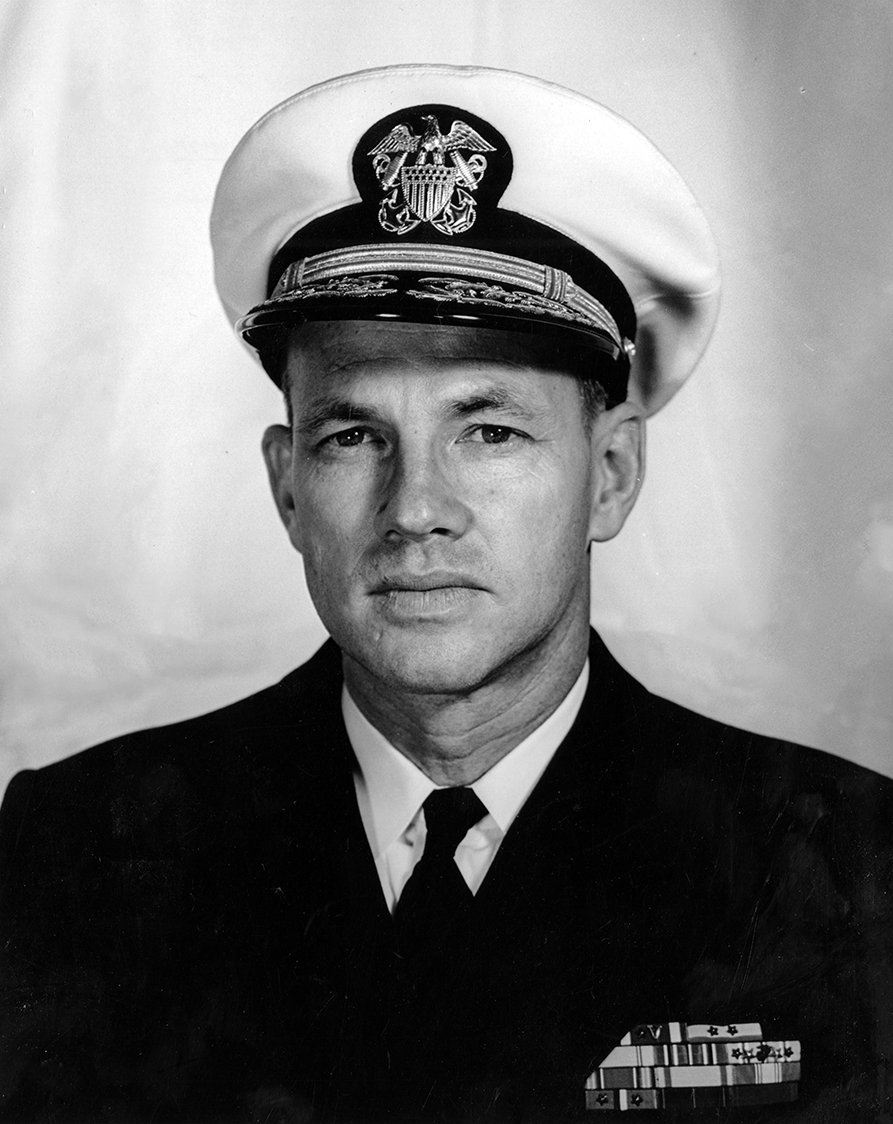
Mustin, Lloyd M., Vice Adm., USN (Ret.)
(1911–1999)
This is the longest oral history, in terms of number of interviews and number of words, ever conducted by the Naval Institute. Between the two volumes, the transcript comprises nearly 600,000 words of text. The first volume begins with a discussion of the Mustin family background. The admiral’s father, Captain Henry C. Mustin, was a pioneer in U.S. naval aviation. Lloyd Mustin graduated from the Naval Academy in the class of 1932 and embarked on a career that was rich in surface warfare experience. He served from 1932 to 1936 in the crew of the heavy cruiser Augusta (CA-31); one of the skippers during that time was Captain Chester Nimitz. Mustin served from 1936 to 1938 in the destroyer Lamson (DD-367), then was a postgraduate student in ordnance and fire control, 1938-40. In 1940-41 he was at the Dahlgren Proving Ground and the Naval Gun Factory in ordnance development.
As the nation embarked in World War II, Mustin was in the crew of the light cruiser USS Atlanta (CL-51) in 1941-42, during her entire commissioned service. He describes his experiences in the night surface battle off Guadalcanal in November 1942 that resulted in the sinking of the cruiser. After that, 1942-43, he served on the staff of Commander Naval Bases, Solomon Islands. Returning to sea duty, he served in early 1943 in the light cruiser USS San Diego (CL-53). In 1943-44 he was gunnery officer in the commissioning crew of the light cruiser USS Miami (CL-89) and was on board during combat operations in the Pacific.
This volume begins in late 1944 when Mustin transferred to the staff of Vice Admiral Willis A. Lee, Jr., Commander Battleship Squadron Two, during the course of combat operations in the Western Pacific. In the spring of 1945 Lee and Mustin returned to the United States to establish Composite Task Force, Atlantic Fleet, in order to devise methods for dealing with Japanese kamikazes. After Lee’s death, the command transformed into the Operational Development Force, and Mustin remained on the staff of the new organization. He subsequently served in 1946-48 in the research division of the Bureau of Ordnance. From 1948 to 1950 he commanded the destroyer USS Keppler (DD-765). Subsequent duties were heavy on destroyer experience: 1950-51, on the staff of Commander Destroyer Force, Atlantic Fleet; 1951-54, Weapons Systems Evaluation Group; 1954-55, command of the destroyer tender USS Piedmont (AD-17); 1956-57, command of Destroyer Squadron 13; 1957-58, chief of staff to Commander Cruiser-Destroyer Force Pacific Fleet; 1958-59, command of Destroyer Flotilla Two.
While serving as the flotilla commander as a rear admiral, Mustin was in command of Project Argus high-altitude nuclear weapons tests in the South Atlantic. In 1959-60 he commanded Key West Naval Base; the transcript contains interesting stories about the flag quarters, which had served as Little White House for President Harry S. Truman. In 1960-61 Mustin headed the Antisubmarine Warfare Readiness Executive in OpNav. Then, from 1961 to 1964 he was as Deputy Commander and later Commander Joint Task Force Eight during nuclear weapons tests in the Pacific. The tests were the last conducted in the atmosphere by the United States before the adoption of a nuclear weapons testing ban that President John F. Kennedy had pushed for.
About Volume I
Based on 21 interviews conducted by John T. Mason, Jr., from August 1972 through August 1973. The volume contains 817 pages of interview transcript plus an index. The transcript is copyright 2003 by the U.S. Naval Institute; the interviewee has placed no restrictions on its use.
About Volume II
Based on 16 interviews conducted by John T. Mason, Jr., from September 1973 through January 1975. The volume contains 684 pages of interview transcript plus an index. The transcript is copyright 2003 by the U.S. Naval Institute; the interviewee has placed no restrictions on its use.



